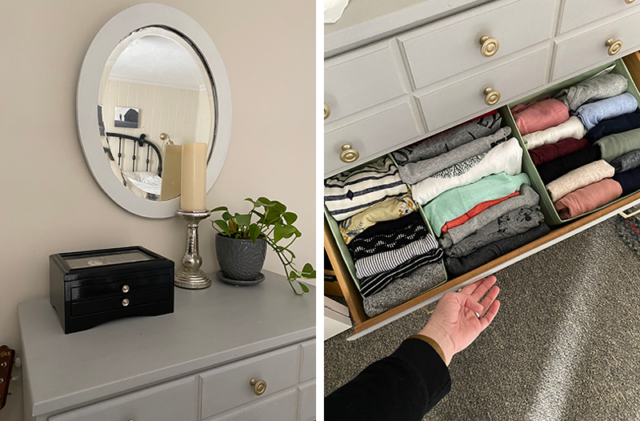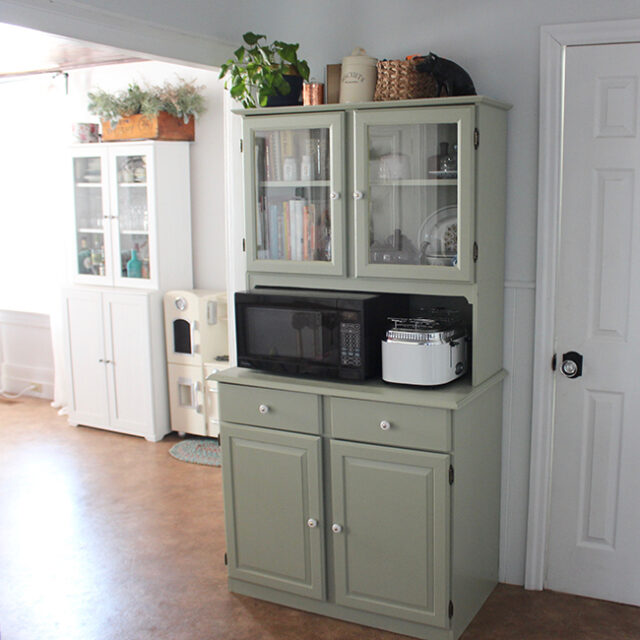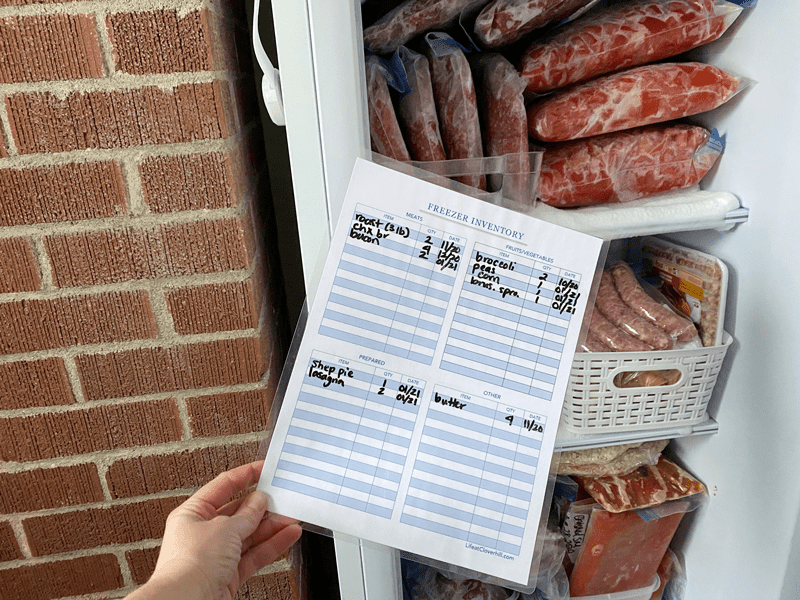Tired of rummaging through the freezer for something for dinner? Or running out of pantry staples because you forgot what you had on hand? Try my Pantry & Freezer Inventory Lists to get your food management under control, saving you time and money.
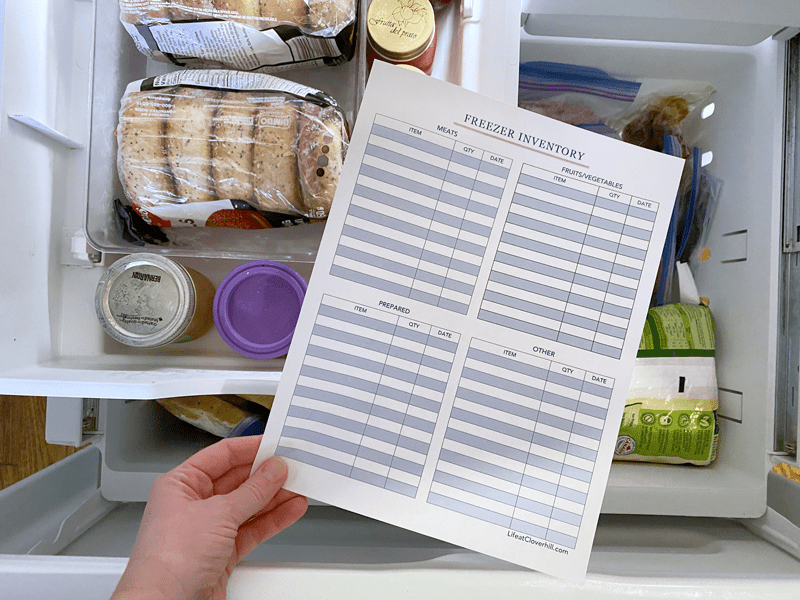
Living out in the country where we get bad winter storms, we’ve always made sure to have a stockpile of food “just in case”. When we came back from vacation last March and then went right into lockdown here in Ontario, I was SO GLAD that we had been prepared for an emergency situation. It gave us the cushion we needed until we were able to come out of quarantine and head out to the store. Since then, we’ve been constantly working towards having a greater food storage supply and now only do a grocery shopping trip twice a month, compared to the twice weekly trips I used to do.

That being said, having a good food storage supply only works if you’re regularly using the food and rotating it out. It’s easy to stock up and then lose track of what you have, so that’s where I’ve found Pantry & Freezer Inventory Lists to come in handy. Right now I’m doing my January Declutter Detox and I’m using these lists while I tackle both spaces this month. You can get a FREE PDF Download of the lists in my Printables Vault. (Join my mailing list for FULL access, if you haven’t already. Sign up form at the bottom of this post).
Why You Need a Pantry & Freezer Inventory
Not sure if doing an inventory is worth the time? Pantry & Freezer Inventory Lists have helped us so much, especially this year and I think it will help you too!
- Easier Meal Planning – When you can look at your food at a glance, it’s easier to see what you have on hand and plan out meal ideas.
- Try New Recipes – Find a new recipe and not sure if you have everything that you need? Check your inventory and you might be pleasantly surprised.
- More Efficient Shopping Trips – Before I head to the store, I snap a picture of my updated Inventory Lists, then when I’m at the store and see a good sale on a pantry or freezer staple, I can check if we already have enough on hand or should grab some more.
- Less Food Waste – Using items before they expire and not having too much of any one thing stocked means you’re far less likely to have food go to waste.
- Save Money – When you have less food waste you save money. You may also find you’re more likely to stock up on goods while they’re on sale to keep your pantry and freezer well stocked.
- Save Time – No more rummaging through the freezer and cupboards looking for things that you need. I keep two separate lists for our kitchen freezer and our long term storage mudroom freezer, so there is no more running back and forth between the two looking for what I need.
- Track Different Pantry & Freezer Areas – We have two freezer spaces and two pantry spaces and this has worked well for us while we’re trying to maintain a greater food supply. We have a freezer in our kitchen (below our fridge) and a larger upright freezer in our mudroom for long term food storage. I keep everyday pantry items in our kitchen cupboards and then we have a larger pantry in our basement for long term canned food storage.
How to Use the Pantry & Freezer Inventory Lists
Keeping our Pantry & Freezer Inventory Lists up to date has really helped with making the most of our food supply and keeping me organized in the kitchen. Ready to get started?
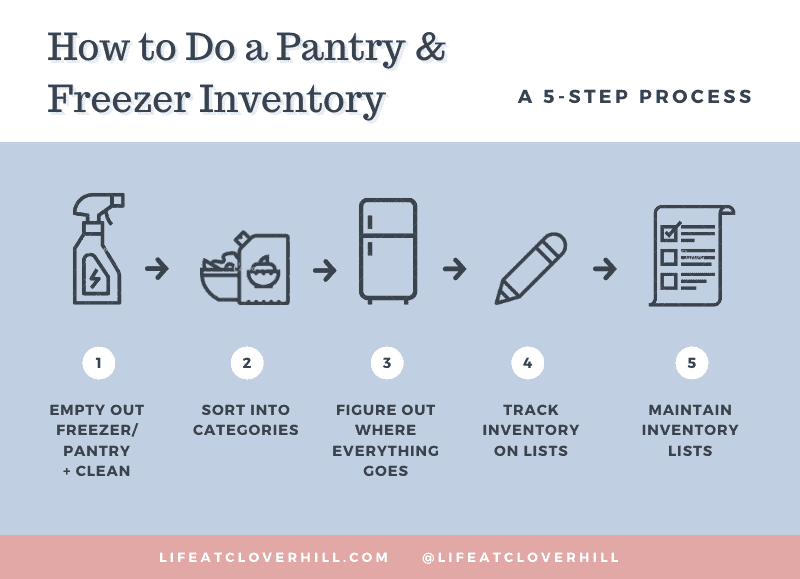
1) Empty Out the Freezer/Pantry & Clean It
Just like I do every time I tackle decluttering a different space, I take everything out and give the space a good cleaning. When emptying the freezer or pantry, I lay clean dish towels or a bath towel on the kitchen floor and empty everything onto it.
2) Sort Into Categories
Now that you have everything laid out and easy to see, it’s time to start grouping it into categories.
For our freezers, I sort into:
- Meats
- Fruits/Veggies
- Prepared Foods
- Other
In the pantries, I sort into:
- Canned Foods
- Dry Goods
- Herbs & Spices
- Other
3) Figure Out Where Everything Will Go
Now you’ll need to figure out where all these categories will go in your freezer and pantry.
If you have more than one freezer, like I do, then you maybe want to consider what you need access to quickly in your kitchen freezer and what could be kept for long term storage in a mudroom or basement freezer. I generally organize ours to have breads, fruit, veggies, spreads and quick ingredients (like frozen herbs) in the kitchen freezer and then store meat and prepared meals in the mudroom freezer.
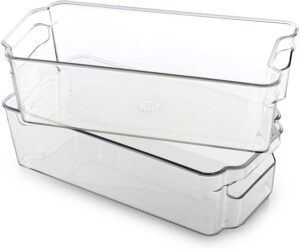
To corral similar items together, try using a freezer-friendly plastic bins. I usually find them at our dollar store for about $3-5 but you can find similar ones on Amazon (Canada / US).
We don’t have a proper pantry upstairs, but generally store our dry goods in kitchen cupboards and then have quick access canned goods in the stairwell pantry we made a few years back. Since the pandemic started, we have created a greater long term food storage pantry in our basement. We now have a good supply of everything from olive oil and beans to sealed sugar and baking ingredients containers. Basically we have at least one back up for all the everyday items we use. When we run out upstairs, it is easy to grab from the downstairs pantry (in the creepy basement) until we can replace it on our next shopping trip. This has greatly cut down on last minute trips to the store because we’ve run out of something.
4) Track Food on the Inventory Lists while Putting Away
As you’re putting everything away in your pantry and freezer, write them down on the Pantry & Freezer Inventory Lists. I keep our lists clipped together hanging from the side of the fridge for easy access when meal planning or making a shopping list.
I’ve designed the Inventory Lists to have the four different categories of the pantry or freezer, along with a column for quantity and the date. For freezer items, I generally mark the date as the month that I froze the item. In our pantry, I go by the expiry date. You can do whatever method works best for you.
5) Maintain Your Pantry & Freezer Inventory Lists
Whenever I use something from the freezer or pantry, I scratch it off on the list or update the number. When I get home from the grocery store, I update the lists with anything for the freezer or pantry. If I make a lasagna and double it for one to freeze, I add it to the list too. Once you get into the habit, it’s easy to keep the lists updated.
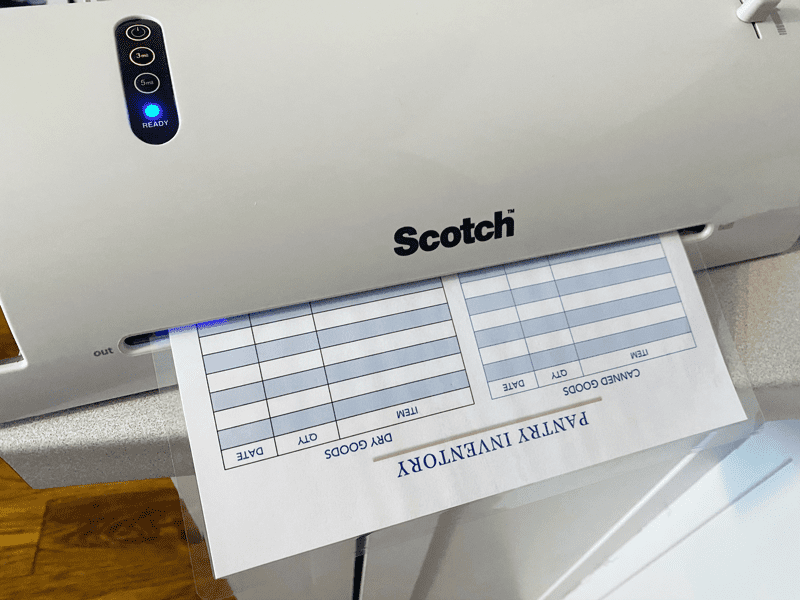
In the past, I’ve printed the sheets and marked them with pen, printing new sheets as needed. I recently bought a laminator (Amazon Canada/Amazon US) and I’m going to try doing laminated inventory sheets with a dry erase marker to see how well that works for us.
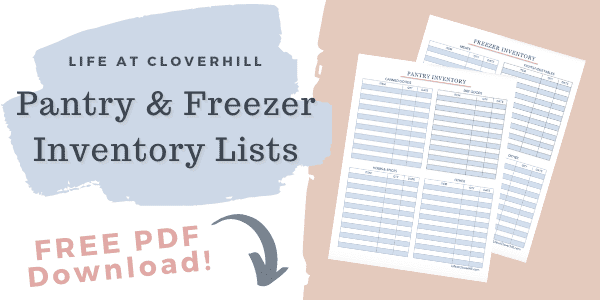
I hope you find these Pantry & Freezer Inventory Lists helpful! For more on the January Declutter Detox, check out these posts below. Don’t forget to follow along on Instagram too!

